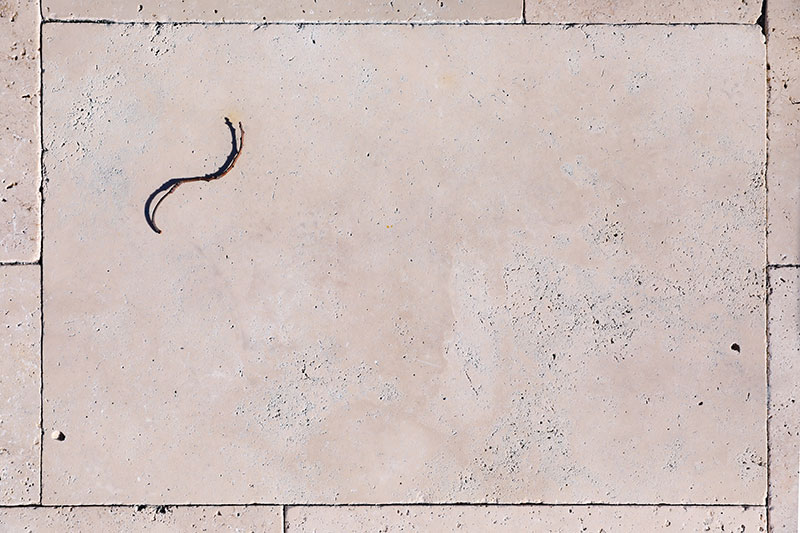Advertisement
If you’re considering using travertine for your next outdoor home improvement project, you may be wondering if it’s better to choose tile or pavers. Both have their own unique benefits, so it can be tough to decide which is the best option for you. In this blog post, we will help make the decision easier by discussing the pros and cons of each option. We’ll also provide some tips on how to choose the right type of outdoor travertine tiles and make the best decision for your needs!
What is travertine and what are its characteristics?
Travertine is a sedimentary rock that is formed around hot springs or in areas with significant geothermal activity. It is composed of calcium carbonate (CaCO3), which is the same material that makes up coral and pearls. Travertine typically has a bumpy or irregular surface, and its colors can range from creamy white to tan, peach, or even rusty red. This stone is commonly used in architectural applications such as flooring, wall cladding, and fireplace surrounds.
One of the most notable characteristics of travertine is its pores. These tiny holes are created when gas bubbles become trapped during the rock’s formation. The presence of pores gives travertine a naturally non-slip surface, which makes it an ideal choice for outdoor flooring and paving. Travertine hardness, durability, and beauty make it a popular material for both indoor and outdoor applications.
What are the pros and cons of travertine tiles vs travertine pavers?
Travertine tiles are a popular choice for flooring because they are durable and easy to clean. They come in a variety of colors and can be polished to a high sheen or left with a natural patina.
One downside to travertine tiles is that they can be slippery when wet. Another downside is that they can be damaged by heavy furniture or pets, so they may not be the best choice for areas where there is lots of traffic.
Travertine pavers are thicker than tiles and can therefore withstand more wear and tear. They are also less likely to slip when wet. On the downside, they are more expensive than travertine tiles and require more maintenance, since they need to be sealed every year or two.
When should you choose travertine tiles and when travertine pavers for your outdoor space?
When it comes to travertine, there are a few things you need to keep in mind. Travertine is a natural stone that is mined from the earth. It’s then cut into thin tiles or thick pavers. Travertine tiles are typically used for floors and walls indoors, while travertine pavers are thicker and better suited for outdoor areas like patios and driveways.
There are a few key differences between travertine tiles and pavers that you should keep in mind when making your decision.
Travertine tiles are much thinner than pavers, which makes them more fragile overall. They’re also susceptible to staining if not sealed properly. However, tiles can be easier to install than pavers because you don’t have to worry about leveling the ground first.
Travertine pavers are thicker and more durable, making them ideal for outdoor use. They can withstand heavy foot traffic and are less likely to crack or break. Pavers can be more difficult to install than tiles, but they provide a more even surface.
When choosing outdoor travertine, it’s important to consider your needs and the climate in your area. Tiles are a better choice for areas with warmer climates, while pavers are better suited for cooler climates.
If you’re still not sure which is right for you, contact a professional stone company to get more advice.
What is easier to install: travertine tiles or travertine pavers?
Travertine tiles are easier to install than travertine pavers. Travertine tiles typically come in 12×12″ or 18×18″ sizes, which makes them easy to work with. Travertine pavers, on the other hand, come in a variety of sizes and shapes, which can make it more difficult to get a precise installation.
Travertine tiles also typically have a uniform thickness, while travertine pavers can vary in thickness. This can create variations in the height of the finished surface, which is something you want to avoid when installing tile. Additionally, travertine pavers are more likely to have holes or pits in them than travertine tiles, which can create problems with the finished surface.
What kind of maintenance is required for travertine tiles and what for travertine pavers?
Proper care and maintenance are required for both travertine tiles and pavers. Cleaning with mild detergent and water is recommended, as well as sweeping or vacuuming regularly to remove dust and grit.
For areas that are exposed to high levels of traffic, a sealer should be applied every few years to help protect the surface from scratches and staining. Travertine pavers should also be re-sealed periodically, as they are more likely to absorb moisture and stains than tiles.

